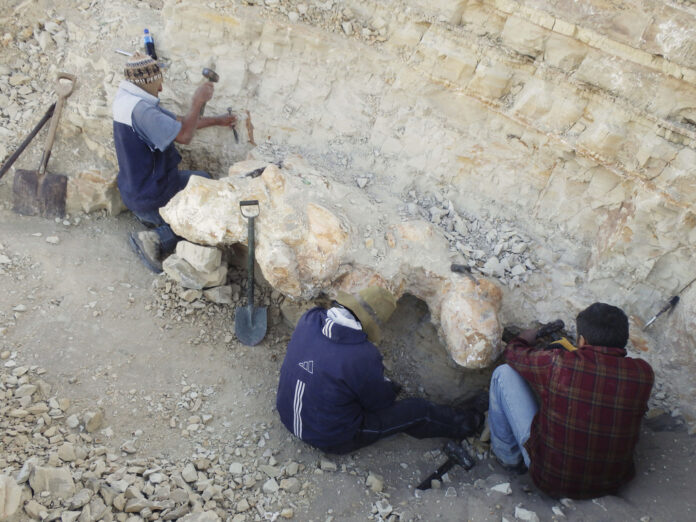
NEW YORK (AP) — There could be a new contender for heaviest animal to ever live. While today’s blue whale has long held the title, scientists have dug up fossils from an ancient giant that could tip the scales.
Researchers described the species — named Perucetus colossus, or “the colossal whale from Peru” — in the journal Nature on Wednesday. Each vertebra weighs over 220 pounds (100 kilograms) and its ribs measure nearly 5 feet (1.4 meters) long.
“It’s just exciting to see such a giant animal that’s so different from anything we know,” said Hans Thewissen, a paleontologist at Northeast Ohio Medical University who had no role in the research.
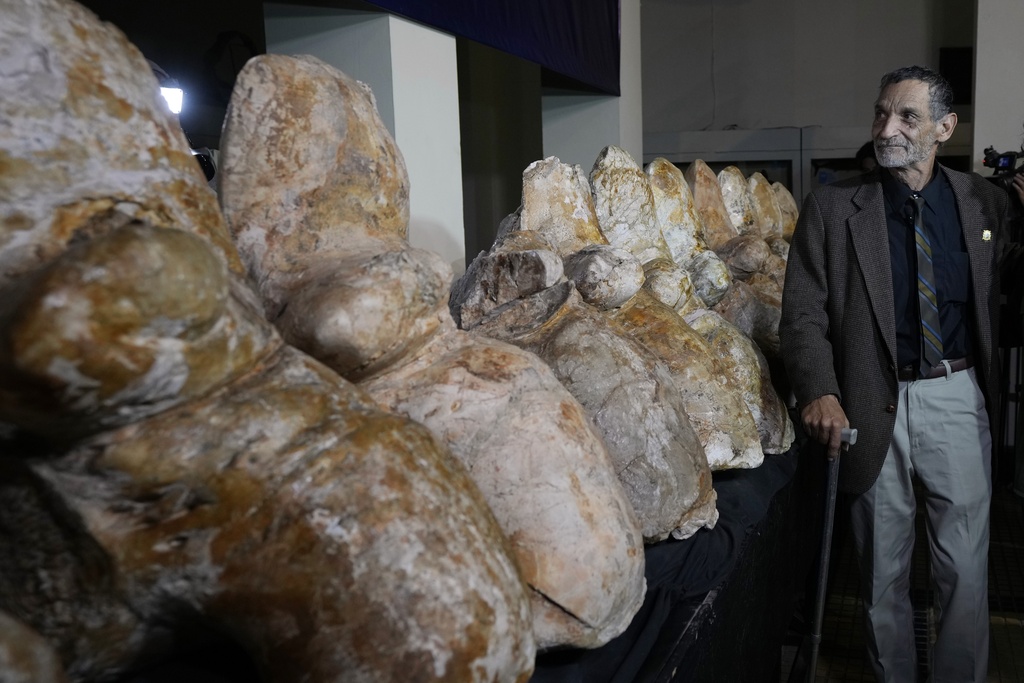
The bones were discovered more than a decade ago by Mario Urbina from the University of San Marcos’ Natural History Museum in Lima. An international team spent years digging them out from the side of a steep, rocky slope in the Ica desert, a region in Peru that was once underwater and is known for its rich marine fossils. The results: 13 vertebrae from the whale’s backbone, four ribs and a hip bone.
The massive fossils, which are 39 million years old, “are unlike anything I’ve ever seen,” said study author Alberto Collareta, a paleontologist at Italy’s University of Pisa.
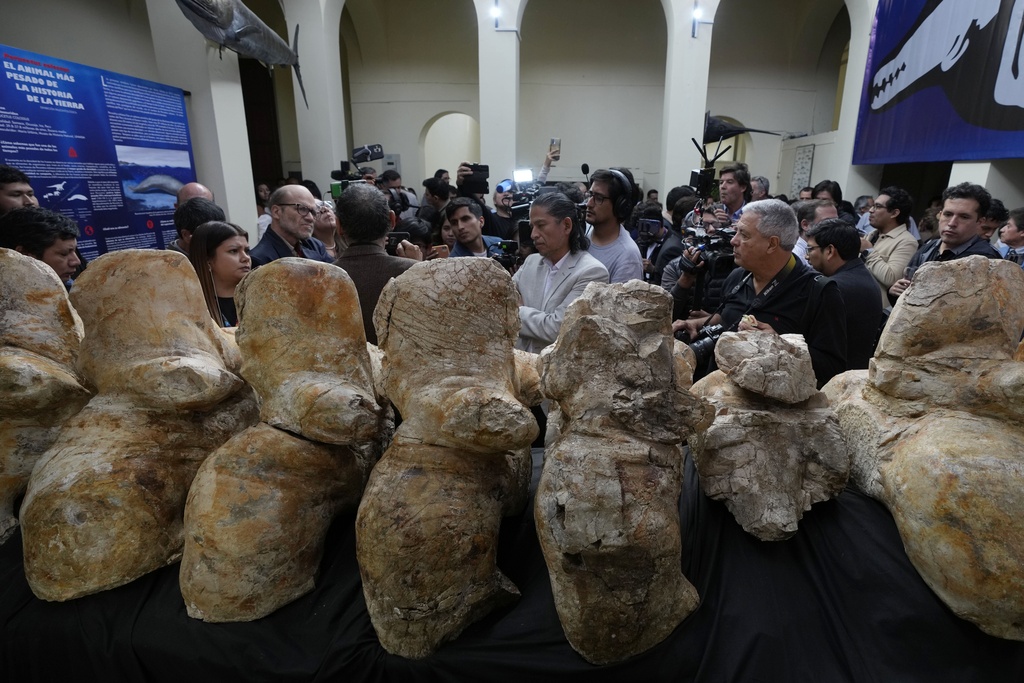
After the excavations, the researchers used 3D scanners to study the surface of the bones and drilled into them to peek inside. They used the huge — but incomplete — skeleton to estimate the whale’s size and weight, using modern marine mammals for comparison, said study author Eli Amson, a paleontologist at the State Museum of Natural History in Stuttgart, Germany.
They calculated that the ancient giant weighed somewhere between 94 and 375 tons (85 and 340 metric tons). The biggest blue whales found have been within that range — at around 200 tons (180 metric tons).
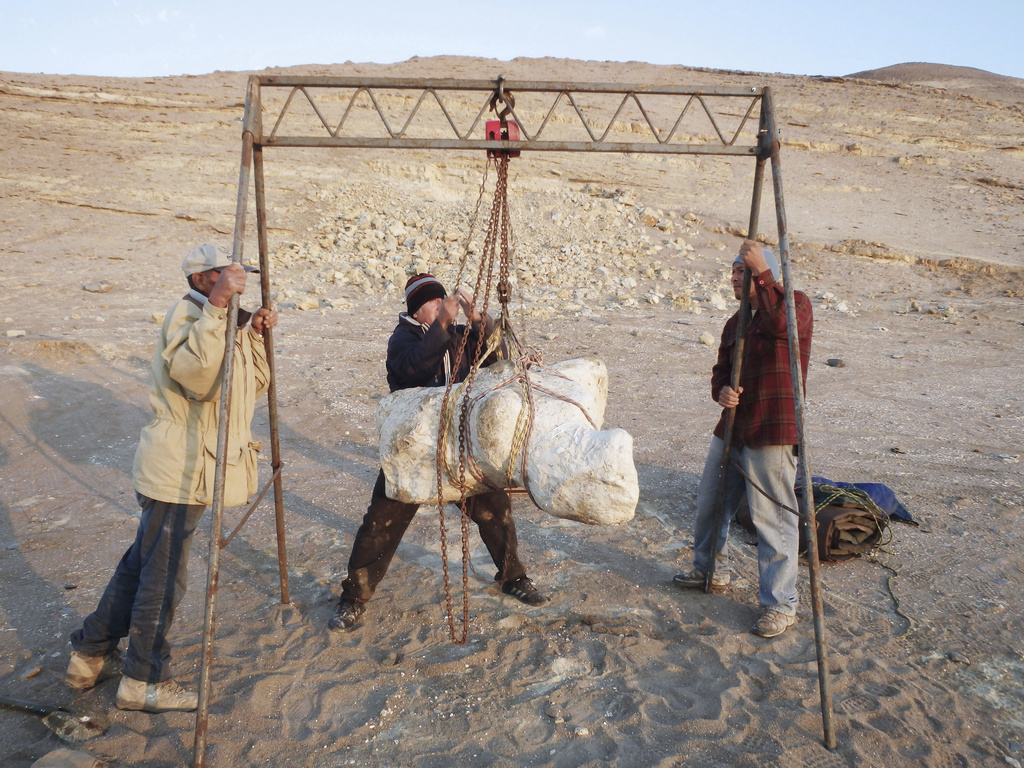
Its body stretched to around 66 feet (20 meters) long. Blue whales can be longer — with some growing to more than 100 feet (30 meters) in length.
This means the newly discovered whale was “possibly the heaviest animal ever,” Collareta said, but “it was most likely not the longest animal ever.”
It weighs more in part because its bones are much denser and heavier than a blue whale’s, Amson explained.
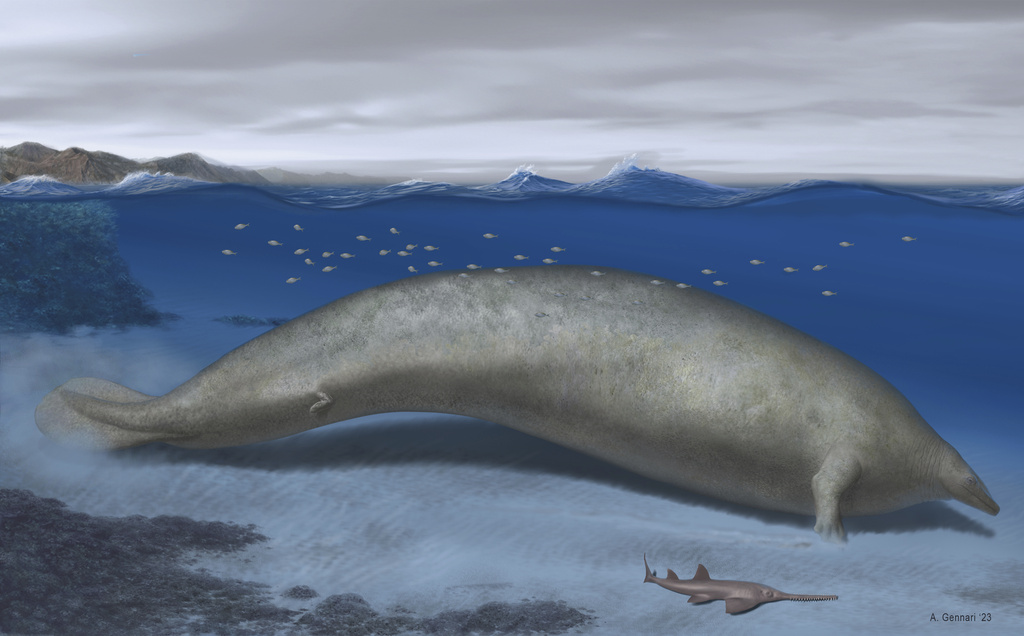
Those super-dense bones suggest that the whale may have spent its time in shallow, coastal waters, the authors said. Other coastal dwellers, like manatees, have heavy bones to help them stay close to the seafloor.
Without the skull, it’s hard to know what the whale was eating to sustain such a huge body, Amson said.
It’s possible that P. colossus was scavenging for food along the seafloor, researchers said, or eating up tons of krill and other tiny sea creatures in the water.
But “I wouldn’t be surprised if this thing actually fed in a totally different way that we would never imagine,” Thewissen added.
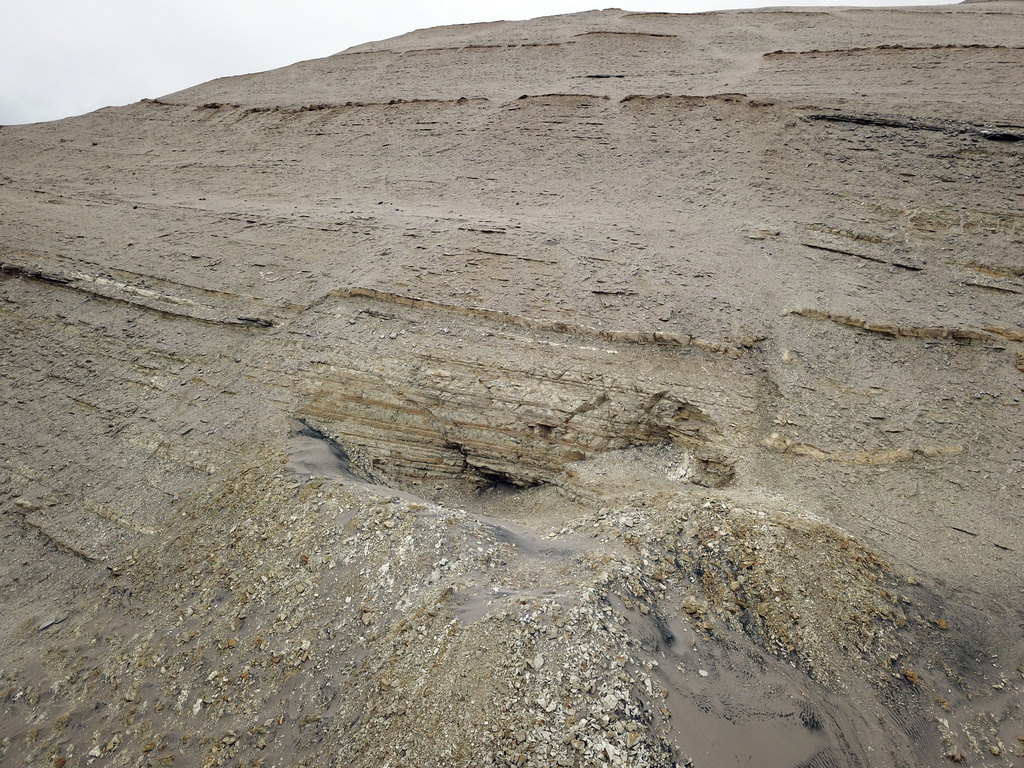
___
MADDIE BURAKOFF AP Science Writer reported from New York. The Associated Press Health and Science Department receives support from the Howard Hughes Medical Institute’s Science and Educational Media Group. The AP is solely responsible for all content.

















































